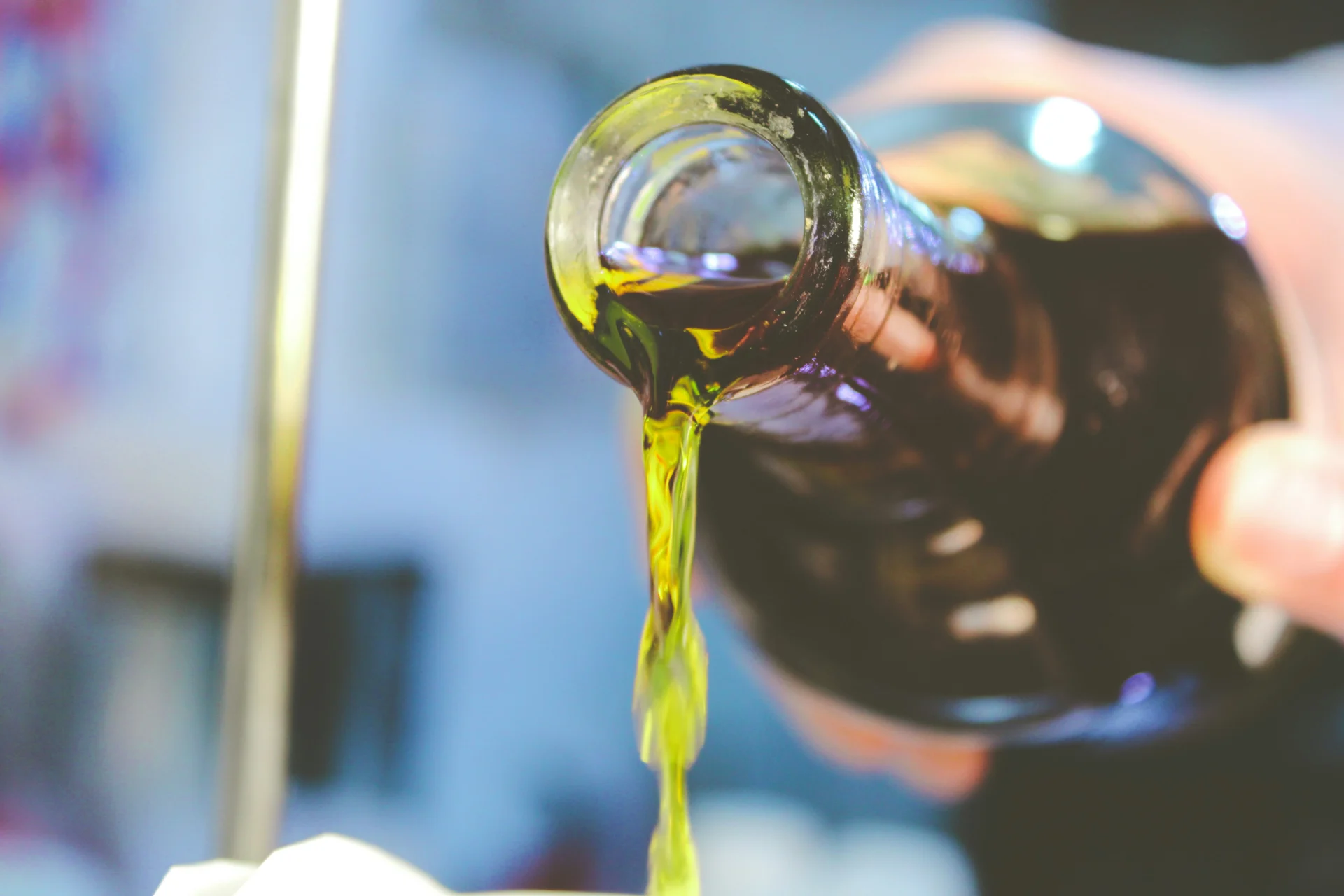Sulfaquinoxaline is a veterinary drug that is widely used to treat and prevent coccidiosis, a common gastrointestinal infection in poultry and livestock. The relevance of Sulfaquinoxaline to everyday life lies in its role in safeguarding the health and well-being of food-producing animals, thereby ensuring a safe and secure food supply for consumers. Its efficacy in controlling coccidiosis also helps to improve animal welfare and productivity, ultimately benefiting the agriculture industry and the wider economy.
Table of Contents:
- 💡 Commercial Applications
- ⚗️ Chemical & Physical Properties
- 🏭 Production & Procurement
- ⚠️ Safety Considerations
- 🔬 Potential Research Directions
- 🧪 Related Compounds
💡 Commercial Applications
Sulfaquinoxaline is a sulfonamide drug that has found various applications in the commercial and industrial sectors. In the poultry industry, it is commonly used as a feed additive to prevent coccidiosis, a common parasitic disease that affects poultry. It can also be used in aquaculture to treat bacterial infections in fish.
In the medical field, Sulfaquinoxaline is primarily used as an antibiotic to treat livestock for bacterial infections. It is commonly administered to cattle, pigs, and poultry to combat various forms of enteric infections. This drug is known for its efficacy in treating diarrhea and other gastrointestinal issues in livestock.
Additionally, Sulfaquinoxaline has been used in the treatment of coccidiosis in racing pigeons. Due to its potent antibacterial properties, it is effective in controlling and preventing infections caused by the coccidian parasite. This application has proven valuable to pigeon breeders looking to maintain the health and well-being of their birds.
⚗️ Chemical & Physical Properties
Sulfaquinoxaline is a crystalline solid with a white to pale yellow appearance and a slight characteristic odor. It is commonly used as an antibacterial agent in veterinary medicine to treat livestock diseases.
Sulfaquinoxaline has a molar mass of 310.36 g/mol and a density of 1.53 g/cm³. Compared to common food items such as sugar (molar mass: 342.3 g/mol, density: 1.59 g/cm³) and table salt (molar mass: 58.44 g/mol, density: 2.16 g/cm³), sulfaquinoxaline falls within the same range of molar mass and density.
The melting point of sulfaquinoxaline is approximately 215-217°C, and its boiling point is approximately 426°C. In comparison, common food items such as butter (melting point: 32-35°C) and water (boiling point: 100°C) have significantly lower melting and boiling points.
Sulfaquinoxaline is sparingly soluble in water and has a relatively low viscosity. In contrast, common food items such as sugar and salt are highly soluble in water, and oils have higher viscosity than sulfaquinoxaline.
🏭 Production & Procurement
Sulfaquinoxaline is produced through a multistep synthetic process involving the reaction of sulfanilic acid with 2-amino pyridine in the presence of specific reagents and catalysts. This reaction leads to the formation of the sulfaquinoxaline molecule, which is then isolated and purified through various techniques such as crystallization and distillation.
Once produced, Sulfaquinoxaline can be procured through established pharmaceutical supply chains, where it is typically sold as a raw material or an active pharmaceutical ingredient. Suppliers of Sulfaquinoxaline often offer the compound in bulk quantities, which can be purchased by pharmaceutical companies, research institutions, or veterinary clinics for formulation into finished products such as tablets, solutions, or suspensions.
The transportation of Sulfaquinoxaline is typically carried out under strict regulatory guidelines to ensure the compound’s stability and integrity during transit. Packaging of Sulfaquinoxaline may vary depending on the supplier and the intended use, with options ranging from large containers for industrial applications to smaller containers for laboratory use. Specialized transport providers may be used for the shipment of Sulfaquinoxaline to ensure safe and secure delivery to the end user.
⚠️ Safety Considerations
Safety considerations for Sulfaquinoxaline, a sulfonamide antibiotic used in veterinary medicine, include potential skin and eye irritation upon contact. It is important to wear appropriate personal protective equipment such as gloves and safety glasses when handling this substance. In addition, proper ventilation should be maintained to prevent inhalation of dust or fumes.
Hazard statements for Sulfaquinoxaline include “Causes skin irritation” and “Causes serious eye irritation.” These statements indicate that direct contact with the substance may result in irritation or damage to the skin and eyes. It is important to take appropriate precautions to avoid exposure and minimize the risk of harm.
Precautionary statements for Sulfaquinoxaline include “Wear protective gloves/eye protection” and “Use only outdoors or in a well-ventilated area.” These statements emphasize the importance of using personal protective equipment and ensuring proper ventilation when handling this substance. It is essential to follow these recommendations to reduce the risk of adverse effects and ensure safe handling practices.
🔬 Potential Research Directions
Research on Sulfaquinoxaline may explore its efficacy as an antimicrobial agent against various bacterial species, particularly those associated with foodborne illnesses. Studies could investigate the mechanisms of action of Sulfaquinoxaline, such as its interference with bacterial folate metabolism, to further understand its antimicrobial properties and potential for resistance development.
Furthermore, research could focus on the pharmacokinetics and pharmacodynamics of Sulfaquinoxaline to optimize its dosage and administration in veterinary and human medicine. This may include studying its bioavailability, tissue distribution, and elimination half-life to ensure effective and safe use of the drug in different populations and circumstances.
Additionally, investigations could be conducted to assess the potential for interactions between Sulfaquinoxaline and other drugs, as well as its toxicity profile in different species. Understanding the drug’s interactions and adverse effects can inform clinical practice and help prevent unwanted outcomes in patients receiving Sulfaquinoxaline therapy.
🧪 Related Compounds
One similar compound to Sulfaquinoxaline based upon molecular structure is Sulfadimidine. Also known as sulphamethazine, Sulfadimidine is a sulfonamide antibiotic that works by inhibiting the synthesis of folic acid in bacteria, which ultimately leads to their death. Structurally, Sulfadimidine contains a sulfonamide group (SO2NH2) attached to a benzene ring, similar to Sulfaquinoxaline.
Another compound with a similar structure to Sulfaquinoxaline is Sulfamethoxazole. Sulfamethoxazole is a sulfonamide antibiotic that is commonly used in combination with trimethoprim to treat various bacterial infections. Like Sulfaquinoxaline, Sulfamethoxazole contains a sulfonamide group attached to a benzene ring, making it structurally similar to Sulfaquinoxaline.
Trimethoprim is another compound that shares a similar structure with Sulfaquinoxaline. Trimethoprim is a dihydrofolate reductase inhibitor that works synergistically with sulfonamide antibiotics to treat bacterial infections. Despite having a different mechanism of action, Trimethoprim contains a pyrimidine ring structure, similar to the quinoxaline ring present in Sulfaquinoxaline.








